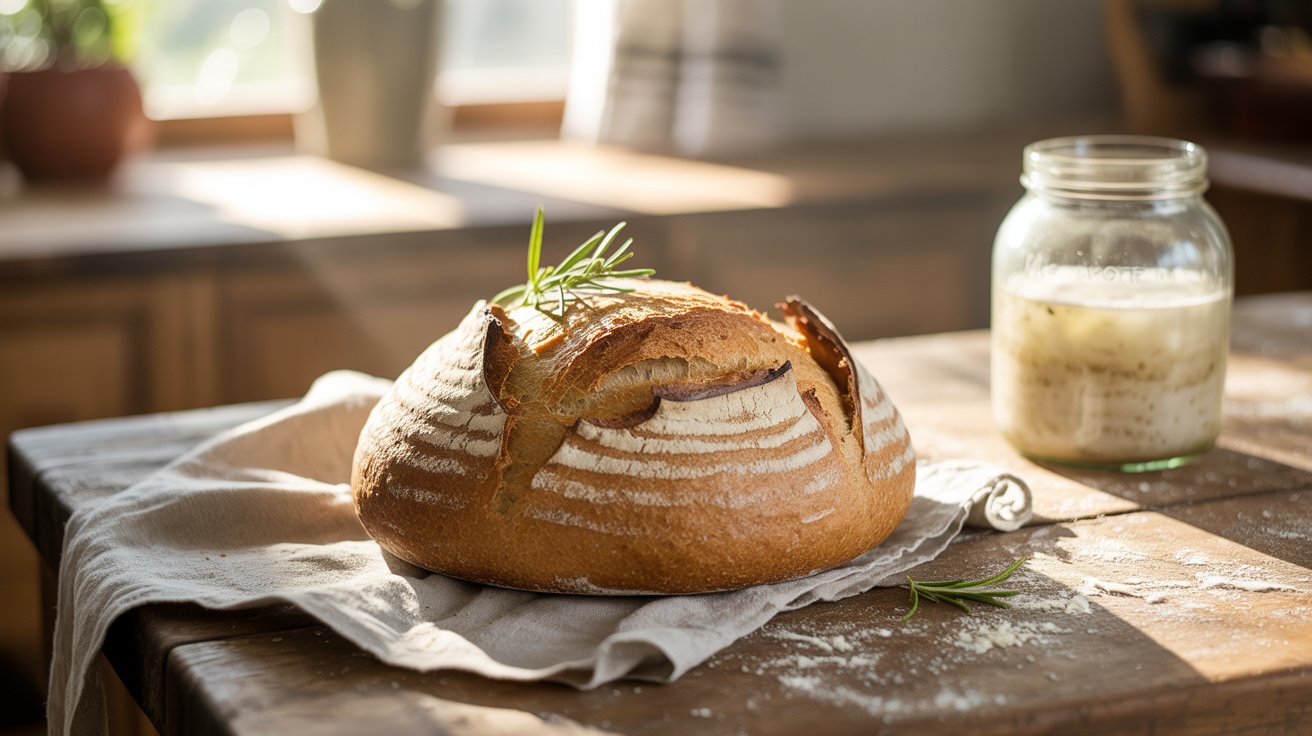Sourdough bread, with its tangy flavor, chewy texture, and crisp crust, has become a staple for home bakers seeking authentic, artisanal results. Unlike commercial yeast breads, sourdough relies on a natural starter—a fermented mix of flour and water teeming with wild yeast and lactic acid bacteria. Mastering this ancient craft requires understanding fermentation, dough handling, and patience, but the reward is a loaf that’s both delicious and deeply personal.
Creating and Maintaining a Starter
The heart of sourdough is the starter. To begin, mix equal parts flour and water (e.g., 100g each) in a jar and let it sit at room temperature for 24 hours. Each day, discard half the mixture and feed it with fresh flour and water. After 5-7 days, a healthy starter bubbles vigorously and smells pleasantly sour. Use high-protein bread flour for robust gluten development, and maintain consistency with daily feedings. If baking less often, store the starter in the fridge and feed it weekly.
Mixing and Fermenting the Dough
A basic sourdough recipe starts with 500g flour, 350g water, 100g active starter, and 10g salt. Combine flour and water, letting it autolyse for 30 minutes to hydrate the flour and enhance gluten formation. Add starter and salt, mixing until a shaggy dough forms. During bulk fermentation (4-6 hours at room temperature), perform stretch-and-fold techniques every 30 minutes for the first 2 hours to build dough strength. The dough should feel airy and slightly elastic when ready.
Shaping and Proofing
Shape the dough into a boule or batard by folding it onto itself to create surface tension. Place it in a floured banneton or bowl lined with a cloth for proofing. For deeper flavor, cold-proof in the fridge for 12-24 hours. This step slows fermentation, enhancing the sour notes and making the dough easier to handle. Before baking, ensure the dough passes the “poke test”—a gentle indent should spring back slowly.
Baking for Perfection
Preheat a Dutch oven to 450°F (230°C) for 45 minutes to create a steamy environment for a crisp crust. Score the dough with a sharp blade to control expansion and create decorative patterns. Bake covered for 20 minutes, then uncover for 20-25 minutes until the crust is deep golden and the internal temperature reaches 205°F (96°C). Cool the loaf for at least an hour to set the crumb structure before slicing.
Troubleshooting and Tips
Common issues include dense loaves (often due to an inactive starter or under-fermentation) or overly wet dough (adjust hydration for flour type, typically 65-75%). Experiment with flour blends, like adding rye or whole wheat, for varied flavors. Online communities, such as Reddit’s r/Sourdough, offer recipes and troubleshooting advice. Keeping a baking journal helps track variables like hydration and fermentation time, refining your technique.
Why Sourdough Matters
Sourdough’s natural fermentation breaks down gluten and phytic acid, improving digestibility and nutrient absorption. Its complex flavor elevates simple meals—think avocado toast or a grilled cheese sandwich. Beyond taste, baking sourdough fosters mindfulness and connects you to a centuries-old tradition. Sharing loaves with friends or family adds a personal touch to gatherings.
Conclusion: Mastering sourdough is a journey of patience and practice. With each loaf, you’ll refine your skills, creating bread that’s not just food but a testament to craft and care. Whether you’re a novice or seasoned baker, the art of sourdough offers endless opportunities for creativity and connection.
